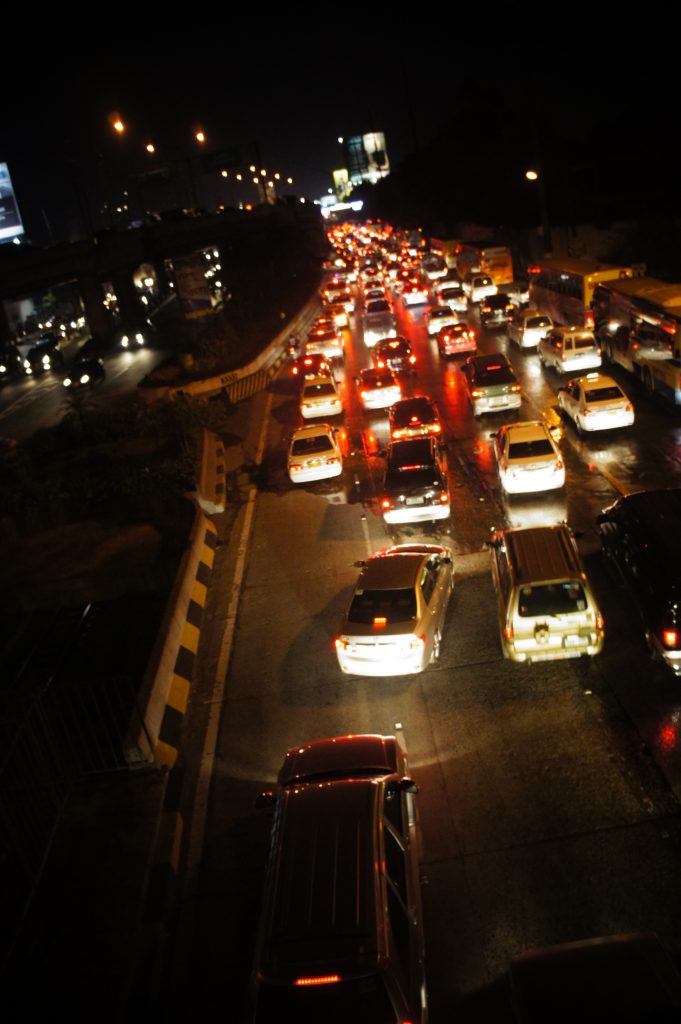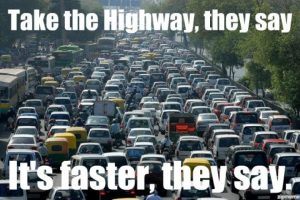The current administration of President Rodrigo Duterte has identified Manila’s traffic problem as a high priority issue, aiming to fix the issue within 2-3 years. Here are some of the actions and proposals the government has offered so far.
(President Duterte discusses traffic in his first State of the Nation Address [SONA] in June 2016.)
- The Duterte administration has requested “emergency powers” through Senate Bill No. 11, or the Transportation Crisis Act of 2016, to more efficiently deal with the traffic crisis. Deliberation on these powers has been delayed since last year, and so these have not yet been granted by the Philippine Senate.
- The Department of Transportation, which is in charge of traffic solutions, has publically emphasized road discipline. It noted that Manila “really needs discipline. [It] can’t just rely on enforcement. Car users need to follow the rules themselves.” The Department has also reformed traffic monitoring systems and lane use on major roads in the city.
- Infrastructure spending was increased from 5 to 7% of the country’s GDP, to fix issues like road structure and sewer management, and to improve the LRT and MRT train systems to relieve stress off the road.
- Other plans include rebuilding the Pasig River ferry system, and copying other countries’ transportation systems such as Bolivia’s cable car system.
References:
ABS-CBN. (2017). Emergency powers for Duterte to address traffic further delayed. [video.] Available at: https://www.youtube.com/watch?v=Ohw54MgfZME (Accessed March 17, 2017).
Cruz, C.A., Tan, W. & PH, C., (2016.) The Philippine Traffic Problem: How the New Government Plans to Solve It. Carmudi Philippines Journal. [online] Available at: https://www.carmudi.com.ph/journal/philippine-traffic-problem-new-government-plans-solve/ (Accessed February 26, 2017).
Dumlao-Abadilla, D. (2016). DPWH eyes metro manila traffic improvement in 2-3 years. Rappler. [online] Available at: http://business.inquirer.net/212822/dpwh-eyes-metro-manila-traffic-improvement-in-2-3-years (Accessed: March 7, 2017).
Inquirer.net. (2016). Duterte enumerates viable, immediate traffic solutions [video.] Available at: https://www.youtube.com/watch?v=4sVqWUoYlY0 (Accessed March 7, 2017).
Rappler, (2016). Dept of Transportation unveils plans to ease Metro Manila traffic. Rappler. [online] Available at: http://www.rappler.com/nation/140721-dotc-unveils-plans-ease-metro-manila-traffic (Accessed February 19, 2017).




 The problem is intensified due to the city’s hourglass shape. The business district, which inevitably attracts traffic, is located right in the middle of the city, squeezed by Manila bay and Laguna lake on each side, and wider suburbs spread in north and south of the district.
The problem is intensified due to the city’s hourglass shape. The business district, which inevitably attracts traffic, is located right in the middle of the city, squeezed by Manila bay and Laguna lake on each side, and wider suburbs spread in north and south of the district.